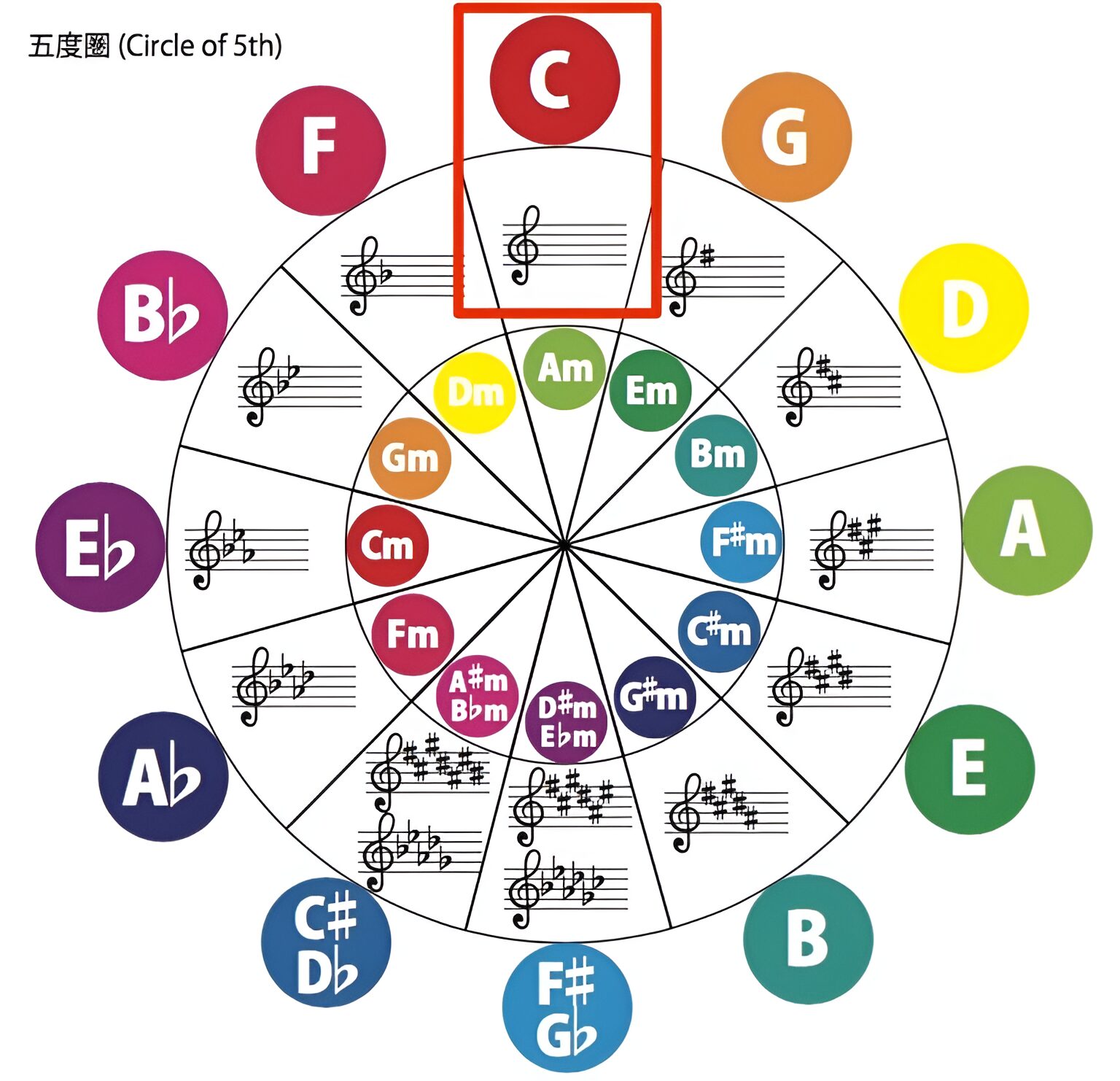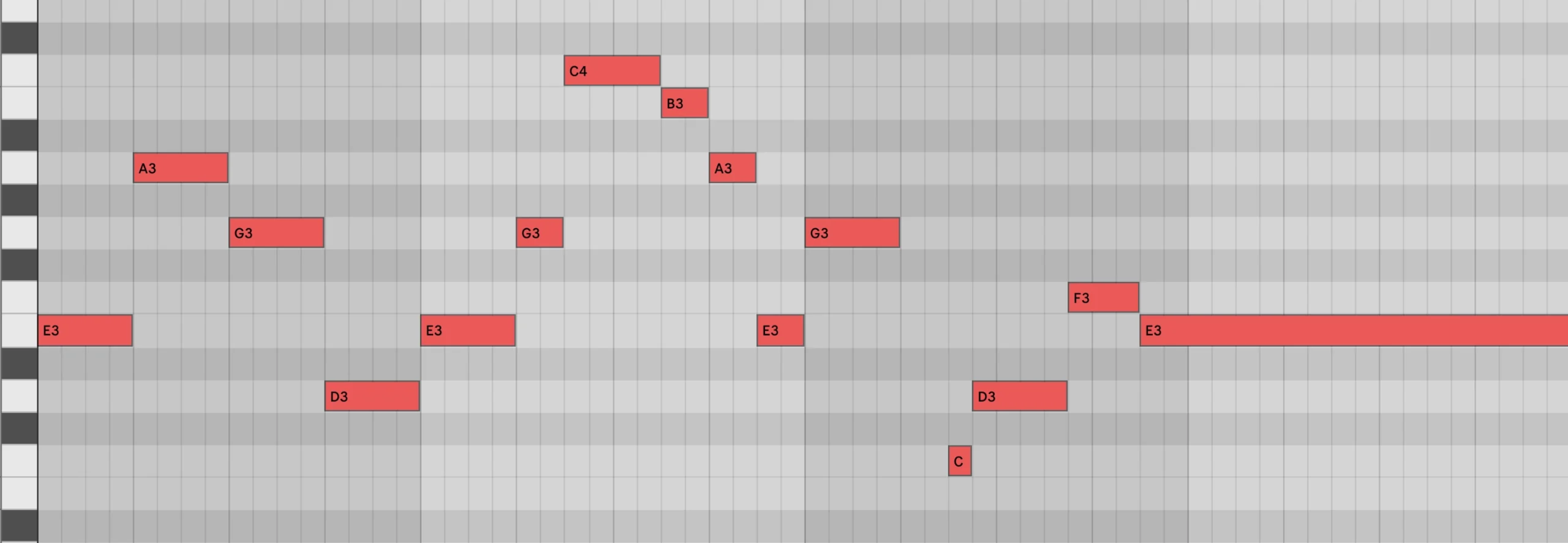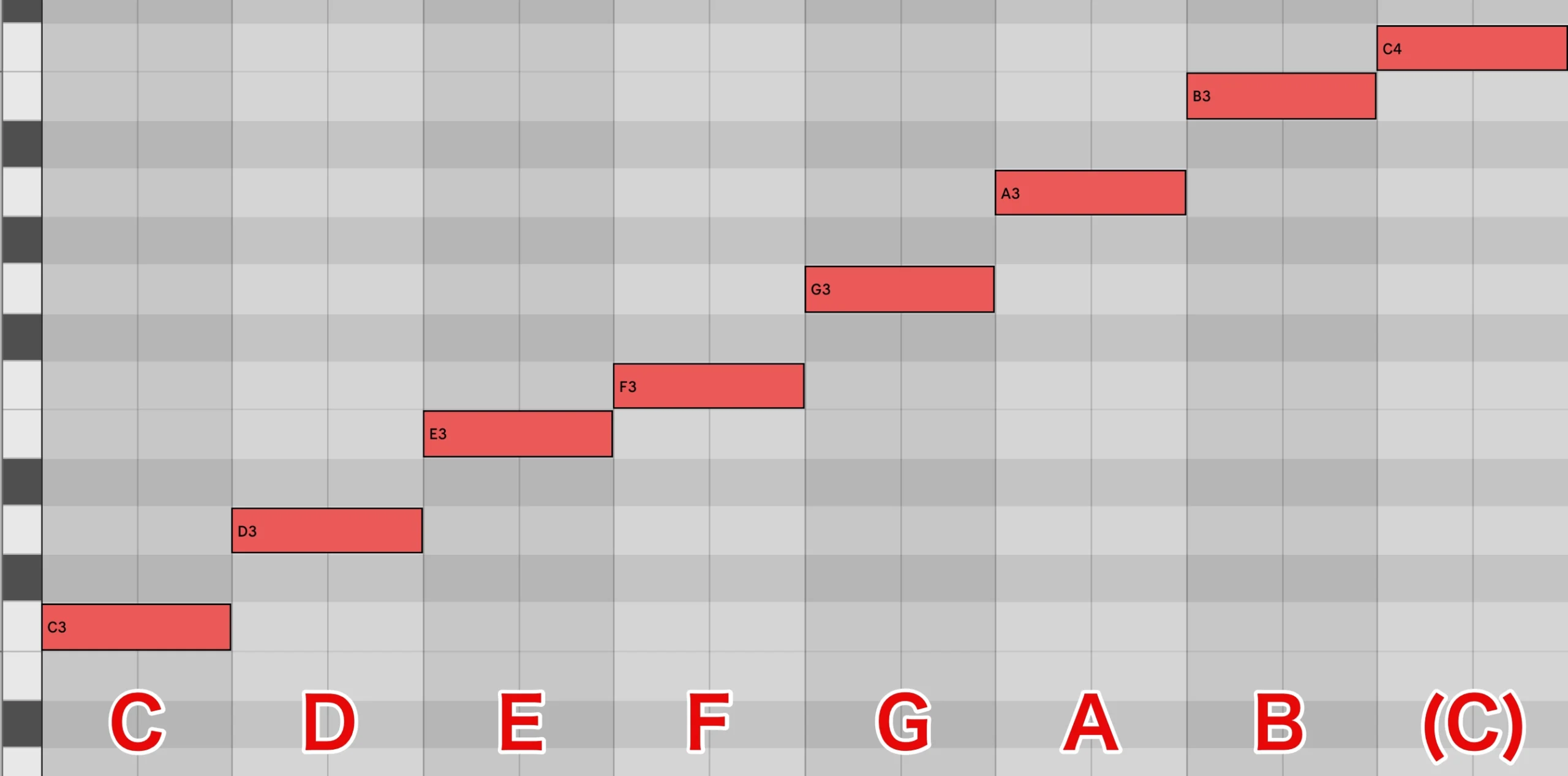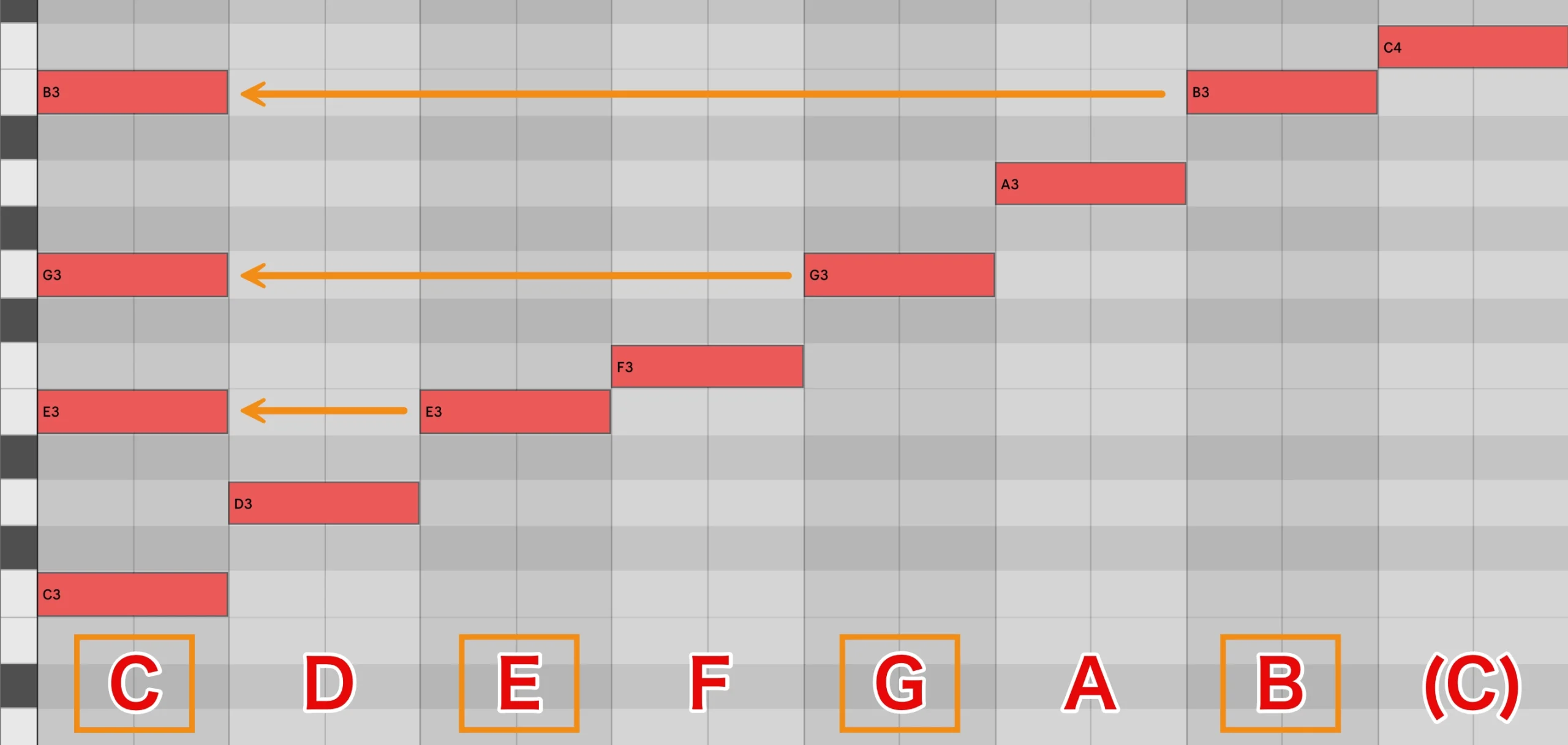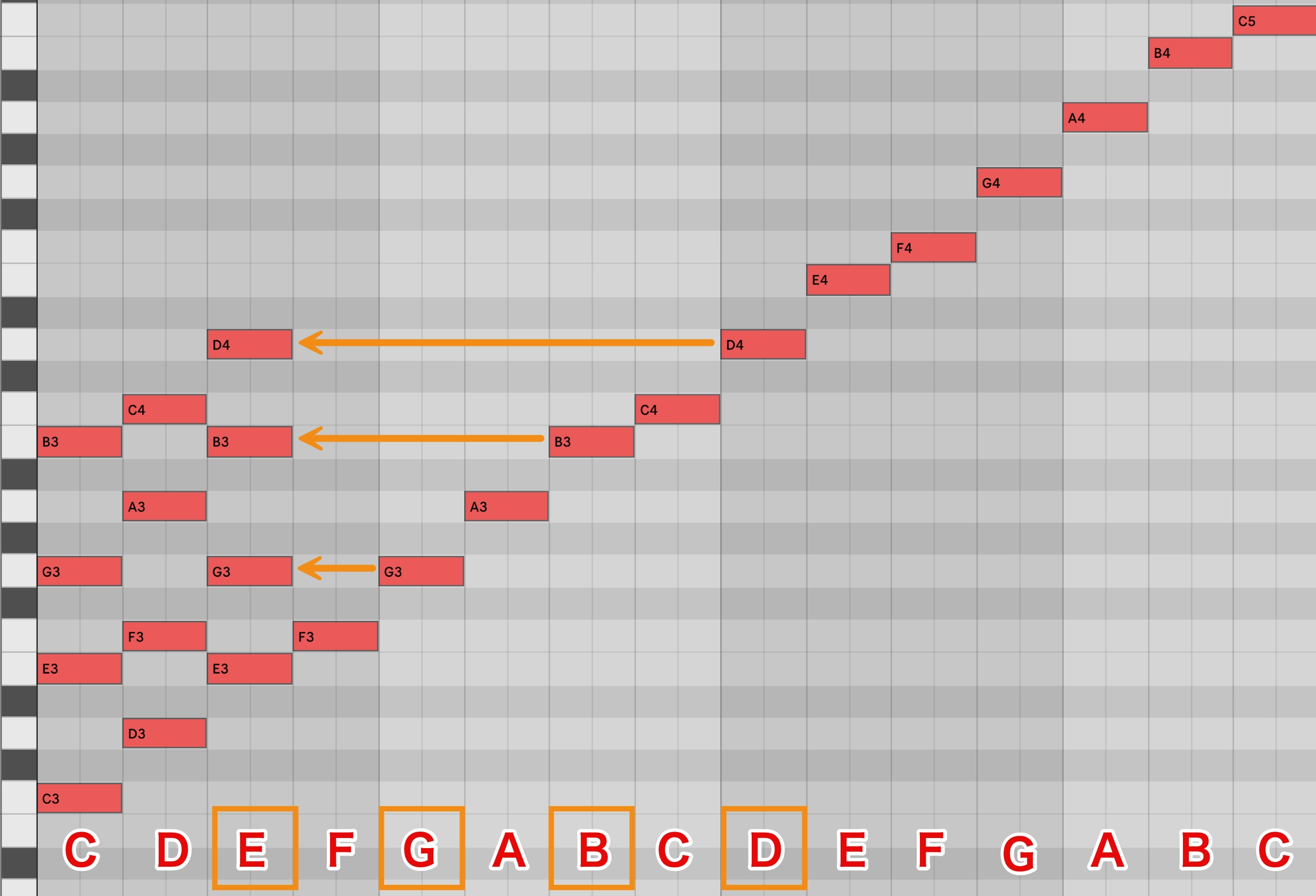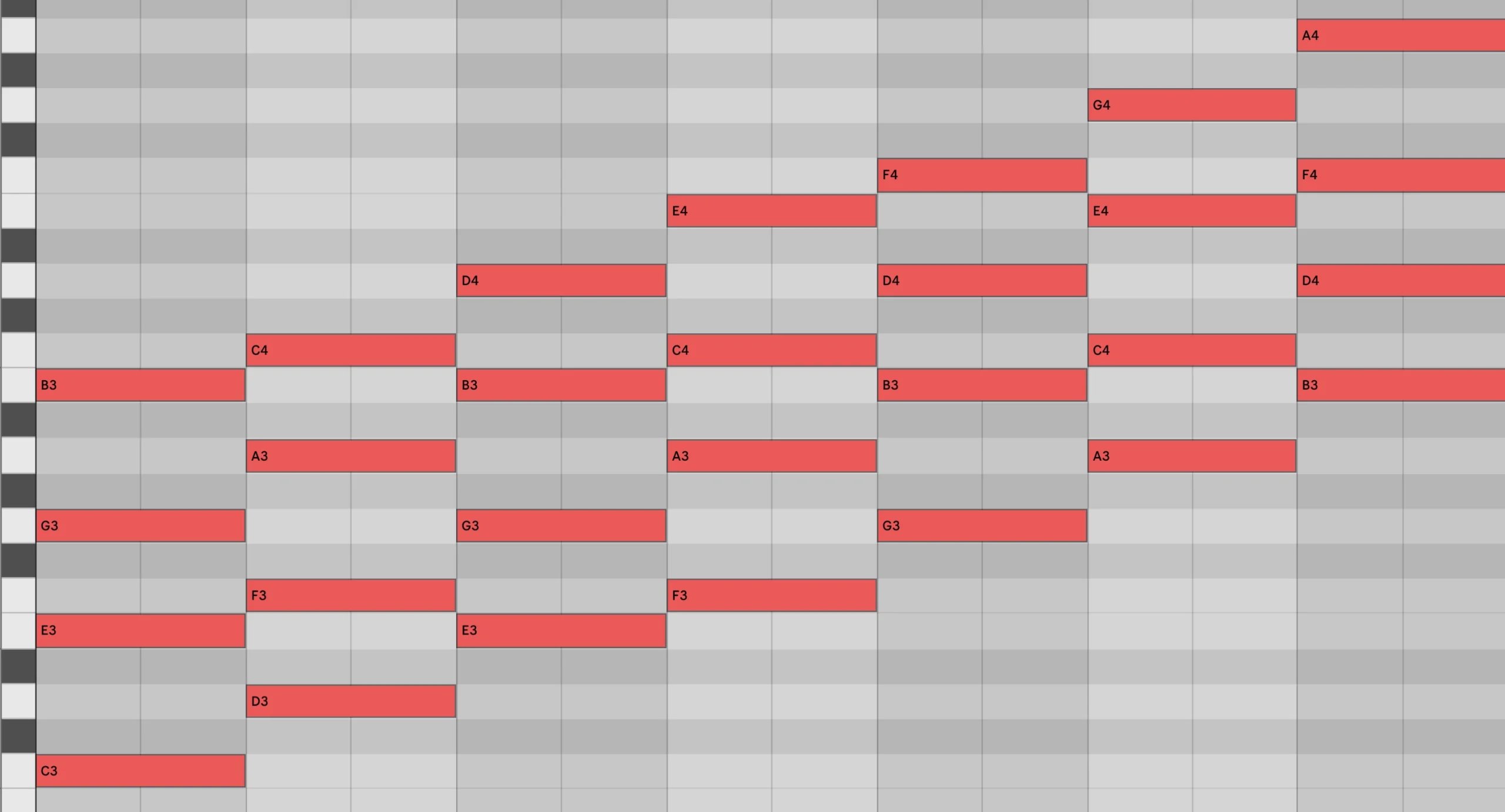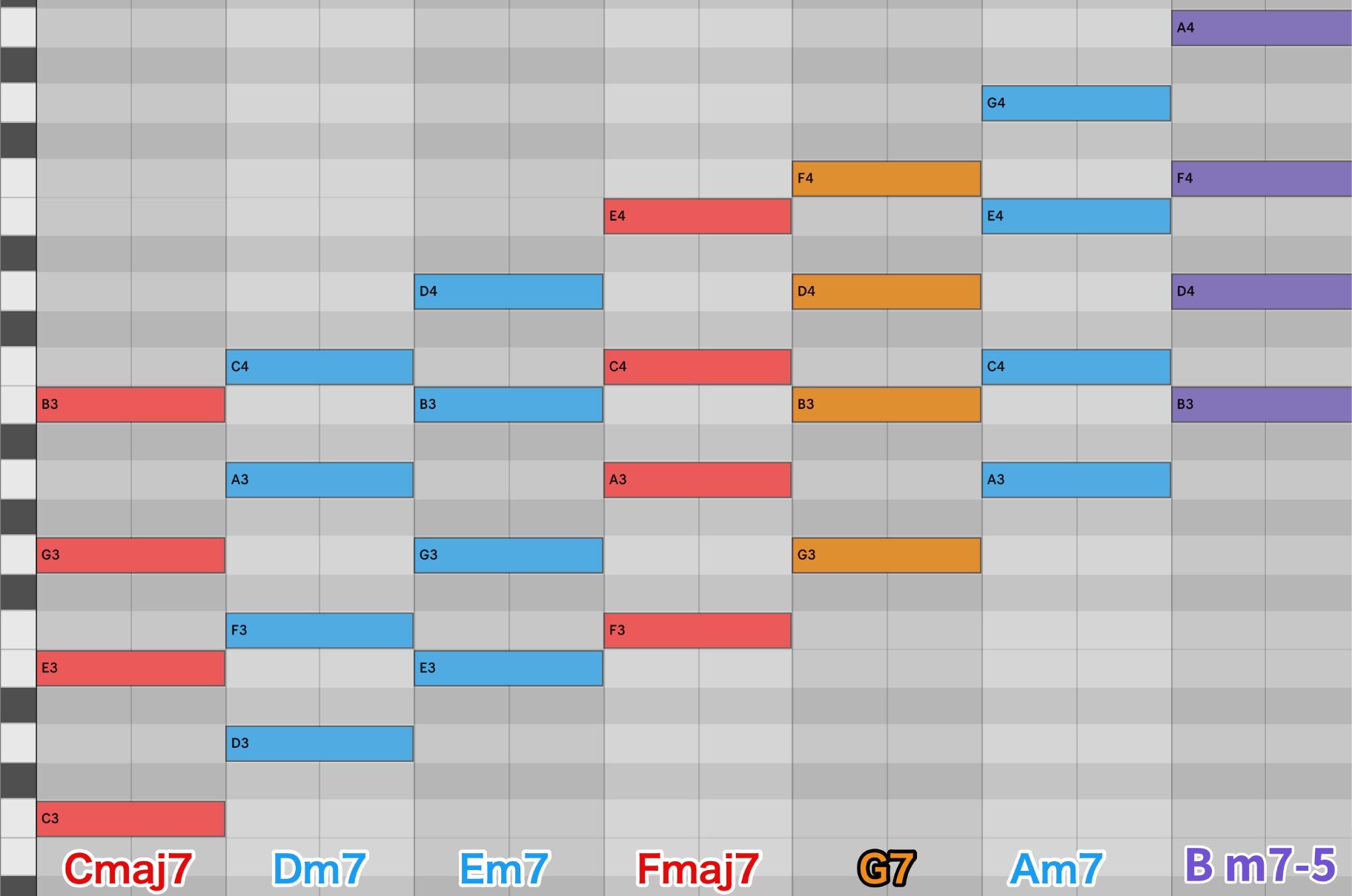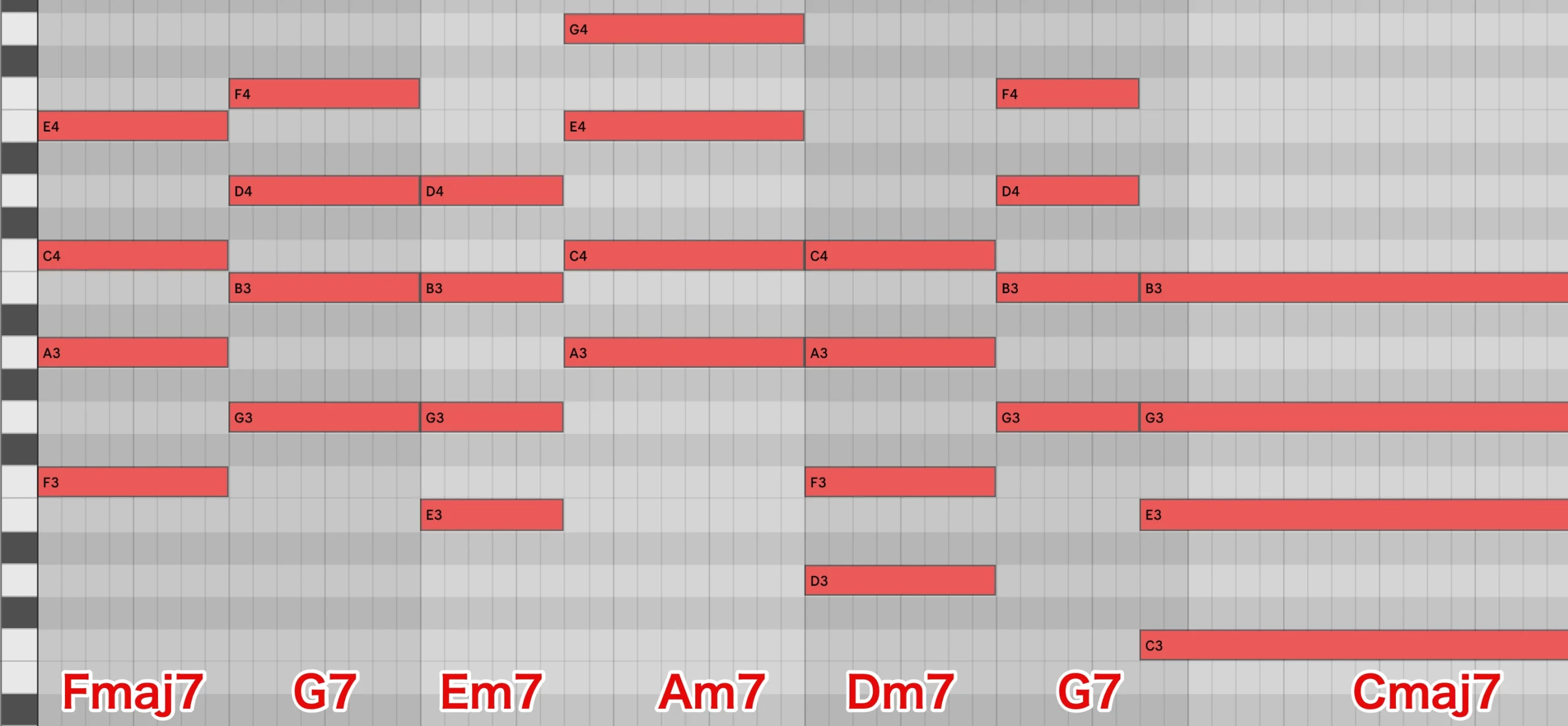4和音のメジャーダイアトニック・コード/音楽理論講座
4和音のメジャーダイアトニック・コード

前回は3和音のメジャーダイアトニック・コードを学びました。
現在、各メジャーキーごとに7つのコードが使用できる状態です。
今回、4和音のメジャーダイアトニック・コードを学ぶことにより、使用できるコードがさらに増え、表現の幅を広げることができます。
(作曲時はもちろん、3和音/4和音ともに混ぜても大丈夫です)
この4和音のメジャーダイアトニック・コードは、前回の3和音に少し手を加えることで完成します。
最大のポイントは前項につづき、特定のキーの中で基本的に使用できるコードです。
例えば、キーがCメジャーの場合、Cメジャースケールの音だけで作られたコードを使います。
4種類のセブンスコードの復習
これまでに取り上げた4種類のセブンスコードを簡単に復習しておきましょう。
わからない場合は、上記リンク先で復習しておいてください。
前回と同様に、曲を作る手順に沿って考えてみましょう。
例えば、key=Cメジャーで曲を作りたいとします。
その場合、基本的にCメジャースケールの音でメロディーを作ることになります。
Cメジャースケールで作ったメロディのサンプルを用意しましたので、確認してみてください。
このメロディの伴奏として使える”基本的な4和音のコード”を知るために、4和音のメジャーダイアトニック・コードの成り立ちを学んでいきましょう。
ダイアトニック・コード(4和音)の成り立ち
今回も、Key=Cで作っていきますので、お馴染みのCメジャースケールを用意します。
4和音の場合、最初の音「C」に対して、右に向かって一つ飛ばしで3つの音を積み重ねます。
「C」の次に「E」、次に「G」、さらに「B」と重ねていきます。
DAW上ならばコピーしていくと良いでしょう。
このようにして、Cメジャーセブンスコードができます。
同じ手順を繰り返していきますが、「E」で重ねる音がなくなりますね。
3和音の時と同様にCメジャースケールの2オクターブ目も打ち込んでおくとわかりやすいです。
こうしてBまで終わったら、各音から始まる4和音のコードのグループができます。
これが、Cメジャーのダイアトニック・コード(4和音)です。
何のコードか分からない場合は、すべてのコードのルートをCにしてみましょう。
各コードの最低音がCになるようにずらします。
一番上の音が3和音との違いになりますので、注目してください。
これまでに取り上げた4種類のセブンスコードの特徴がよくわかると思います。
元に戻して、4和音のダイアトニック・コードの構成を見てみましょう。
メジャー・セブンス マイナー・セブンス マイナー・セブンス メジャー・セブンス
ドミナント・セブンス マイナー・セブンス マイナーセブンス・フラットファイブ
という並びになります。
3和音と同様、この構成は他のメジャーキーであっても変わりません。
例:Dメジャー ダイアトニック・コード(4和音)
キーに合わせたダイアトニック・コード(4和音)を付ける
では、上で示したKey=Cのメロディに、Cメジャーのダイアトニック・コード(4和音)を付けてみましょう。
ご覧の通り、すべてCメジャーのダイアトニック・コード(4和音)で構成しましたが、キーから外れた感じがせず、しっくりきていますね。
また、3和音と違って、切なさや複雑な感情が込められているように感じます。
次回は、一度ダイアトニックコード関連から離れ、実際のアレンジなどにも生かせるコードの応用方法を学んでいきましょう。
まずはメジャーキーによる曲作りを取り上げていきます。
そうすることで、マイナーのダイアトニック・コードがより理解しやすくなります。






